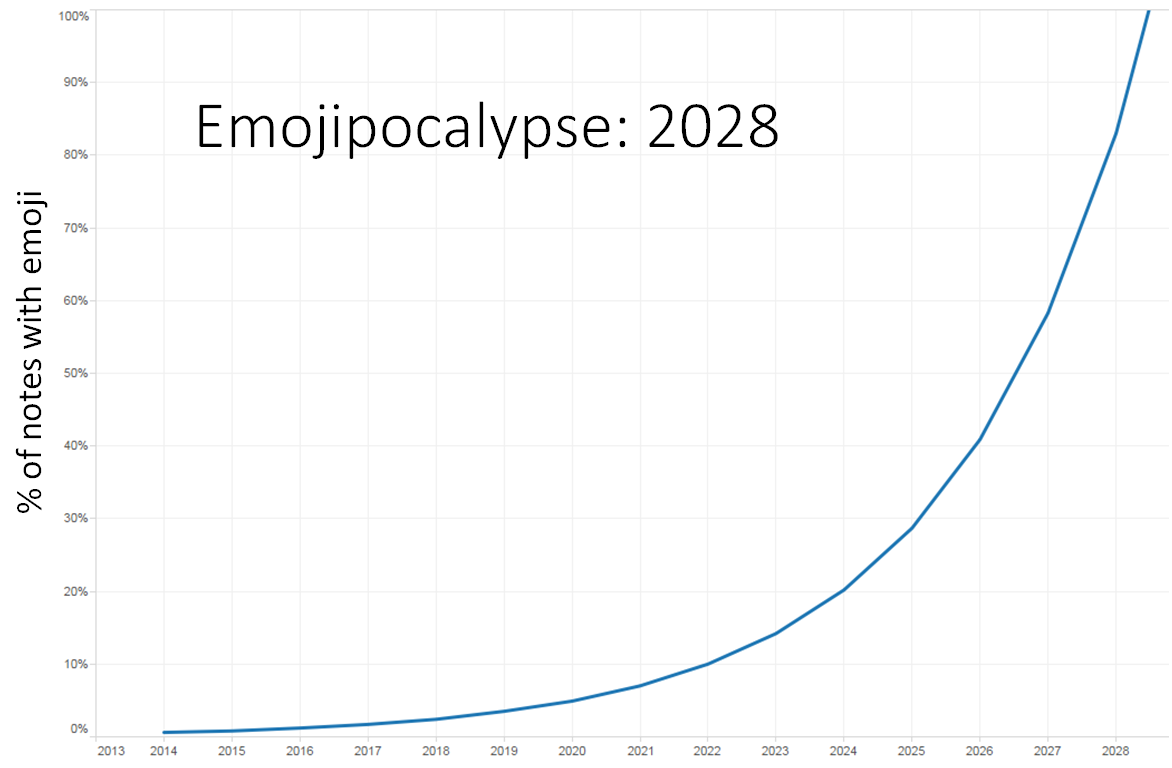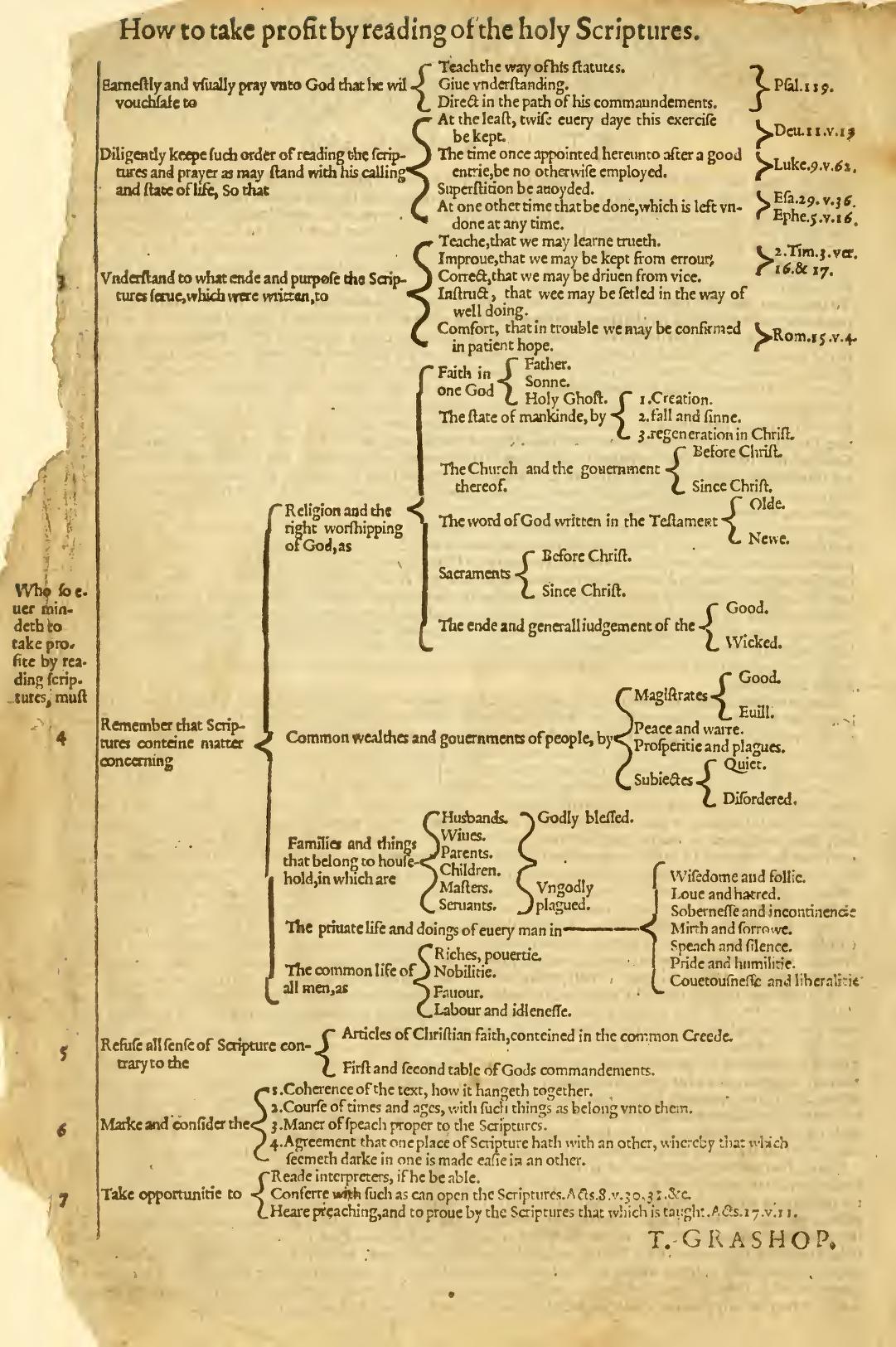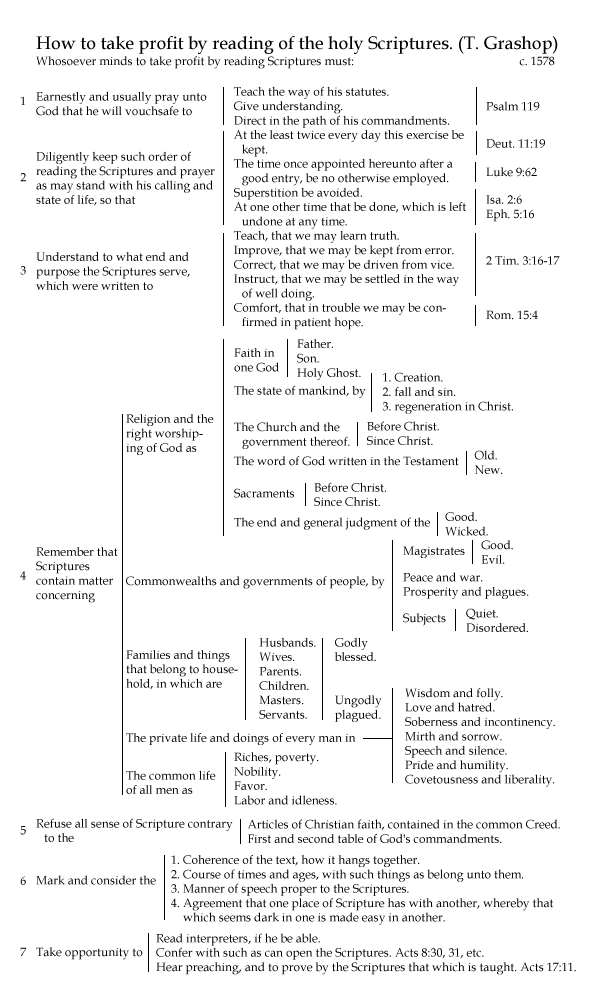The final slide of my presentation (.pptx, .pdf) at last weekend’s BibleTech conference half-jokingly argued that 100% of digital Bible notes would contain emoji by the year 2028, up from 1-2% in 2015:

Unknown to me, the previous day, Instagram had published an analysis showing how 40% of Instagram posts contained emoji in April 2015. Already they’re well on their way to over 50% of all posts including emoji–some countries (Finland, France) are already there, which in turn means that the emojipocalypse may arrive sooner than expected.
Instagram’s analysis ascribes consistent meanings to certain emoji. For example, they provide several religion-related meanings for the so-called* “praise the Lord” emoji:
🙌: … #yeslawd, … #stayblessed, … thou
“Thou” in particular suggests that people are sharing KJV-based Bible verse pictures with this emoji attached to them.
The Instagram study, with its high emoji percentages, indicates to me that people use emoji when they’re already primed for images and especially when they’re sharing a photo. This explanation makes a lot of sense to me, and I feel silly for not thinking of it earlier, especially considering that a whole section of my talk discusses how people approach the Bible differently when images are involved. Let’s look at the data:
Percent of Tweets with Emoji
|
Bible verses shared on Twitter |
Links to Bible websites on Twitter |
|
All tweets |
Excluding retweets |
All tweets |
Excluding retweets |
| With image |
14.7% |
13.3% |
24.8% |
6.2% |
| Without image |
2.4% |
3.0% |
2.7% |
2.4% |
There are two datasets here: one tracks all the Bible verses shared on Twitter (for one day only: about 200,000 tweets), and the other tracks links to Bible websites on Twitter (for all of April 2015: about two million tweets). In both datasets we see that people are far more likely to include emoji when their tweet includes an image than when it doesn’t.
So there you go: emoji usage correlates with image usage, at least on Twitter and at least with Bible verses.
Separately, the Bible-verse Twitter tracker now keeps a daily total of emoji shared with Bible verses.
* No one actually calls it this.


